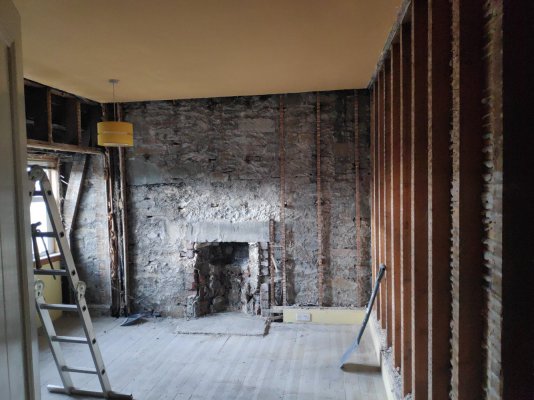Hi all,
So I bought a period property in Scottland that was built around 1900. I want to insulate the internal walls (I cannot insulate the outside as it is in a Conservation area). I did my research, and I am now considering two options.
Option 1: Celotex GA4100 General Purpose PIR Insulation Board - 2400 X 1200 X 100mm
Option 2: STEICO Therm Wood Fibre board
PIR:
Advantages:
Wood fibre:
Advantages
Thanks for all the help!
So I bought a period property in Scottland that was built around 1900. I want to insulate the internal walls (I cannot insulate the outside as it is in a Conservation area). I did my research, and I am now considering two options.
Option 1: Celotex GA4100 General Purpose PIR Insulation Board - 2400 X 1200 X 100mm
Option 2: STEICO Therm Wood Fibre board
PIR:
Advantages:
- Much better R-Value (the higher, the better): According to the Celotex datasheet, a 100mm insulation achieves 4.5 R-Value (m².K/W) .
- Easier installation, as I can use a plasterboard over it.
- According to Scotland-specific research (Guide to Energy Retrofit of Traditional Buildings), PIR-type insulation must only be used if a complete condensation analysis confirms that it can be used. Unfortunately, for that reason, the study excludes PIR insulation and does not compare it to the other options.
- Given the wall type, we must maintain a well-ventilated air gap behind the insulation. As it is not trapped air, does it not somewhat decreases the insulation capability compared to wood fibre, which does not require an air gap?
- If it is not airtight, there is a severe risk of condensation.
Wood fibre:
Advantages
- Breathable. This approach does not require ventilated air gap.
- It does not have to be airtight, and if cracks appear over time, it won't cause worry.
- Much lower R-Value (the higher, the better): Documentation states it achieves 2.5 R-Value (m².K/W) at 100mm.
- Hard to install as I have to lime plaster over it.
Thanks for all the help!

